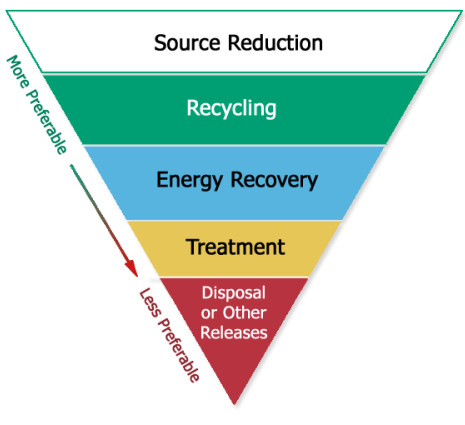
Environment
Comments: No Comments
How we use materials and products is a large factor in energy use, climate change, raw material consumption, and our economic stability. Correspondingly, our consumption habits play a major contributing factor to all these statistics, as cited by the U.S. Environmental Protection Agency (EPA):
- Between 1970 and 2004, worldwide greehnouse gas (GHG) emissions increased by 70%.
- The U.S. consumed 57% more materials in the year 2000 than in 1975.
- With less than 5% of the world’s population, the U.S. was responsible for about one-third of the world’s total material consumption from 1970-1995.
- In 1900, 41% of materials used in the U.S. were renewable. By 1995, only 6% of materials consumed were renewable.
- Of all the materials the U.S. consumed in the past 100 years, more than half were consumed in the last 25 years.
As developing nations continue to industrialize and increase their material consumption, resource demands and pressures on our supply chains will only increase. According to EPA, “the implications of current patterns of material use for the environment (including climate), the economy, and our survival are profound and unsustainable.”
But it is possible to stop this pattern from continuing along this path.
The Triple Bottom Line
Most entities are familiar with the triple bottom line (TBL) as a framework to measure performance that goes beyond traditional financial metrics to also measure social and environmental performance. At its core, the TBL is a system where economic growth is tied directly to factors that reduce environmental impacts, encourage social justice, and generate financial returns. It is also one of the best indicators of how sustainable an organization is.
By adopting sustainable materials management (SMM), organizations can improve their TBL—reducing their environmental impacts significantly, while still increasing profit—and contribute to the overall sustainability of our world.
Sustainable Materials Management vs. Integrated Waste Management
Identifying and managing wastes is important. If waste is incorrectly managed, there are regulatory compliance risks, exposure risks, and potential financial penalties that can have lasting impacts. This is what Integrated Waste Management (IWM) is about—managing materials after they have reached the end of their useful life and keeping materials out of the landfill to the extent possible.
SMM broadens the ideas behind IWM to examine all the environmental impacts of material production and consumption, not just waste diversion or recyclability. It considers the entire lifecycle (i.e., extracting, manufacturing, distributing, using, and end-of-life management) of a product and/or process. EPA expands on this concept stating, “SMM is an approach to serving human needs by using/reusing resources productively and sustainably throughout their lifecycles, generally minimizing the amount of materials involved and all associated environmental impacts.” And, subsequently, contributing to the TBL.
EPA cites several ways SMM is different than current IWM approaches:
| Sustainable Materials Management (SMM) | Integrated Waste Management (IWM) |
| Seeks the most productive use of raw materials and resources. | Seeks to minimize and/or manage wastes or pollutants. |
| Focuses broadly on impacts of all the lifecycle stages of a material or product (upstream, midstream, and downstream). | Focuses on what to do with wastes once generated (downstream). |
| Concerned with inputs and outputs from/to the environment. | Concerned mainly with outputs to the environment. |
| Goal of overall long-term system sustainability. | Goal of managing a single set of environmental impacts. |
| Responsible parties include everyone involved in the lifecycle of a material or product, including consumers. | Responsible parties are those who generate waste. |
Regulatory Drivers
The Resource Conservation and Recovery Act (RCRA) provides the legislative basis for EPA’s SMM Program. RCRA establishes a preference for resource conservation over disposal. EPA’s Waste Management Hierarch further emphasizes source reduction/waste prevention and reuse over the options of recycling and composting, energy recovery, and treatment and disposal.

Even with these preferences, the current U.S. environmental regulatory requirements focus largely on controlling end-of-pipe emissions to the air, water, and the land. The regulatory system does not focus on sustainability; as such, current environmental regulations do not require a lifecycle focus when it comes to waste management.
Despite the lack of regulatory requirements, EPA is working to promote efforts to manage materials and products from a lifecycle perspective through the U.S. EPA Sustainable Materials Management Program Strategic Plan: FY 2017-2022 (October 2015) and the related Sustainable Materials Management: The Road Ahead (June 2009) document. The Agency reinforces the need to identify new approaches and better integrate programs to address how materials are extracted and subsequently designed, manufactured, used, and managed at end-of-life to ensure there are sufficient resources to meet not only today’s needs but also those of the future.
One of the best ways an organization can help achieve these goals is to conduct a lifecycle analysis (LCA), which considers potential environmental impacts at every stage of a product’s life. Part 2 of KTL’s series on Creating Sustainable Impacts will dive into conducting the LCA.
